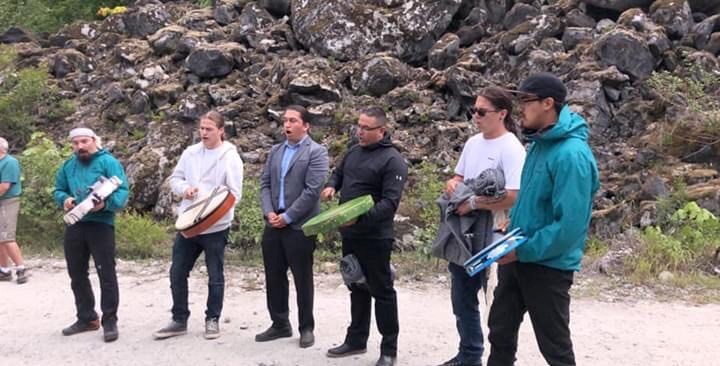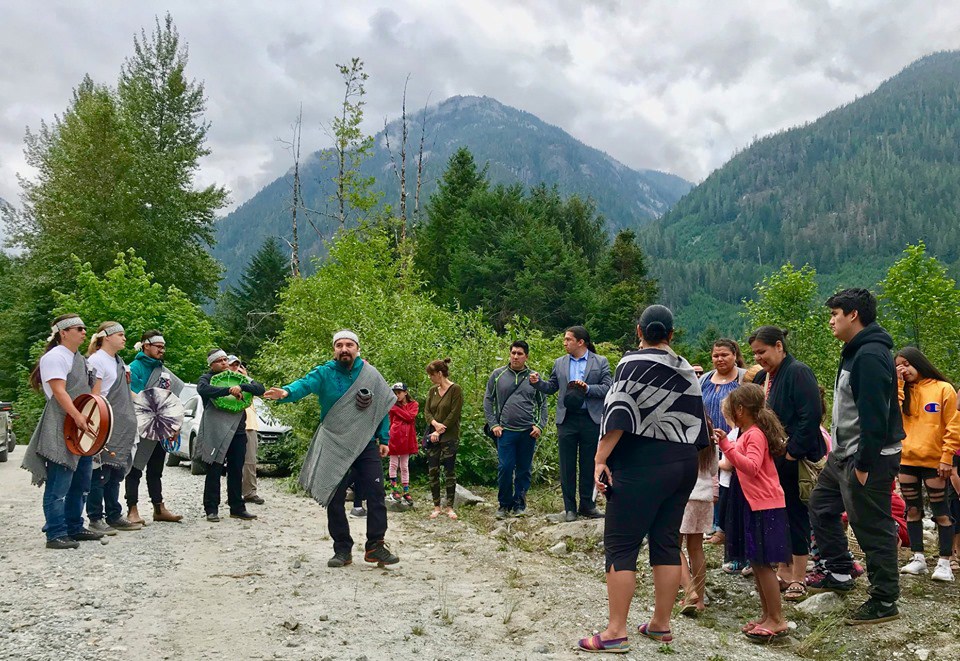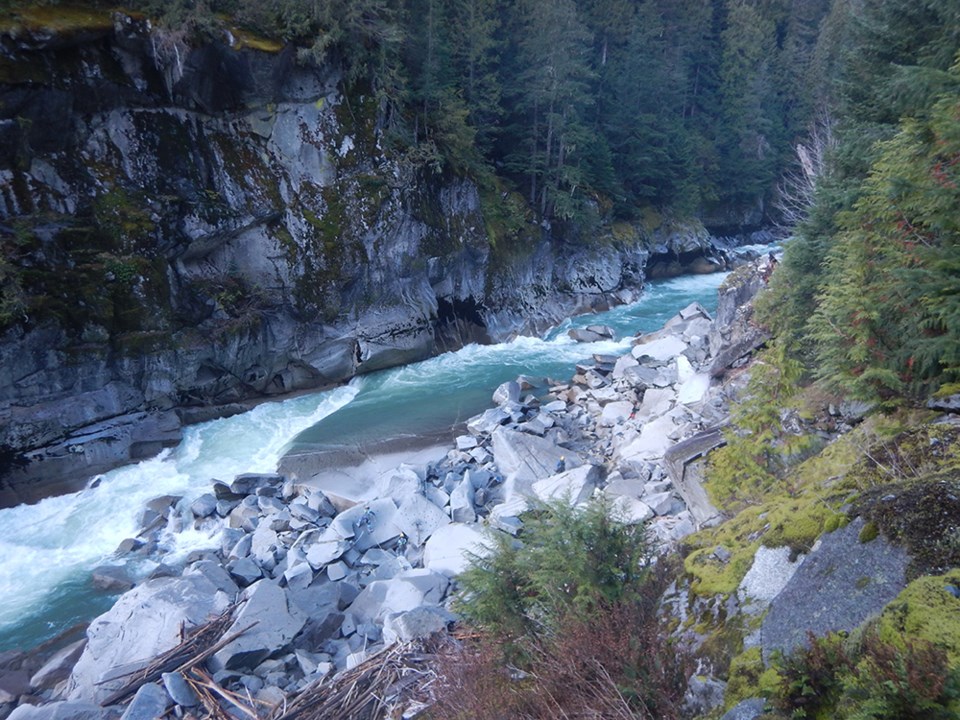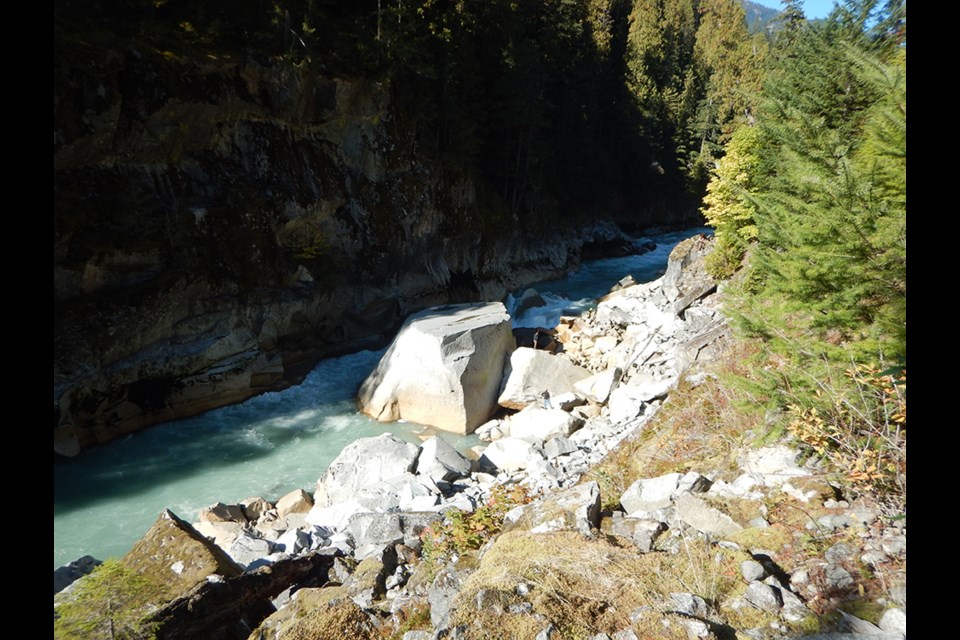When Syetáxtn (Chris Lewis) was a boy, his grandfather used to talk of the massive salmon — upwards of 40 pounds — that were caught in the Elaho River, which is within the traditional territory of the Squamish Nation.
Historically, there were Squamish Nation fishing villages along the river, which is a tributary of the Squamish River.
"All of that changed when the logging road got put in," Syetáxtn said.
Road construction in the area in the 1960s and 1970s led to large boulders, one the size of a large house, falling into the river and blocking the migration of salmon, at about 55 kilometres north of the Squamish Estuary.
"It was basically from then that the Nation and the elders started seeing the drastic decline in those five-year-old chinooks," he said. "Every year, there were less and less of them. So, from a traditional knowledge, oral history point of view, my uncles and our grandparents and our elders told us that, in order to get those big chinooks back, we needed to remove the rock."
Syetáxtn said it wasn't an easy sell.
Government authorities would say there was no evidence that the fish had been impacted.
Nation members would counter that they had seen a drastic decline, Syetáxtn said.
"The Nation really saw it as: we need to reopen all of that prime habitat of the Elaho valley, the Elaho basin, where Clendinning [River] and Sims [Creek] come in," he said.
"It was just something ever since I was young, and echoed even more by Randall Lewis and Chief Dick Williams when I got on council, saying this is what we have to do; this is one of our major projects that we need to do."
Biologist Edith Tobe, currently executive director of the Squamish River Watershed Society, says that in 1998 she and Randall Lewis tried to get funding for the project, but it was denied.
"Year, after year, we tried," she said.
In 2017, the Nation was able to get funding through the West Coast Energy Fund, Tobe recalled, and the Nation contracted Tobe to do an assessment to determine what needed to be done.
Work to remove the blockage began that same year.
In addition to the Nation and the Squamish River Watershed Society, the Fisheries and Oceans Canada's Resource Restoration Units (RRU) program was also involved,
Squamish's Tenderfoot Creek Hatchery ultimately contributed fish and assessment.
"It is a very exciting project and very large scale," said Tobe.
Blasting to move the rocks was done in 2017, with the largest blasts in September of 2018.
Approximately 5,000 chinook fry were released into the Upper Elaho in July 2019.
Syetáxtn was there.

"I really wanted to recognize Randall Lewis and all his tireless work, in terms of boots on the ground along with Chief Dick Williams, continuing to push for that and for passing along the baton to me," he said.
The Nation held a ceremony on the banks of the river and gathered representatives thanked the fish and recognized the chinook as the chief of the salmon people, hence why they are the first ones to return back to the river each year, Syetáxtn recalled.
"It was emotional. It is something your elders have been telling you. The Nation had to convince many others that this was the right thing to do, so it was great."

On May 9, 10,000 chinook smolts were released.
More work still needs to be done to remove remaining rocks, but there is hope the river will help move some of that, said Syetáxtn.
And everyone involved will wait to see in the coming years, how the chinook do in the better flowing river.
Fast Fact:
The Elaho River watershed encompasses three "wild spirit places," meaning places that should not be developed, but instead managed to keep their natural cultural value. These places include, the “Nsiiyx-nitem tl’a sutch (Upper Elaho), Nexw-àyantsut (Sims Creek) and Esté-tiwilh (West Squamish).




